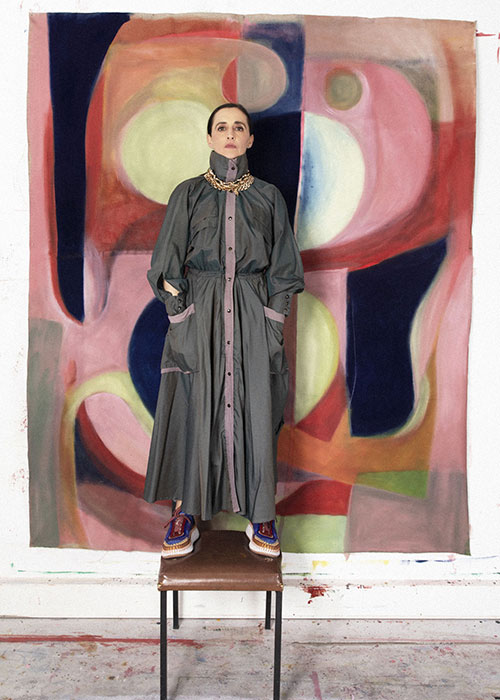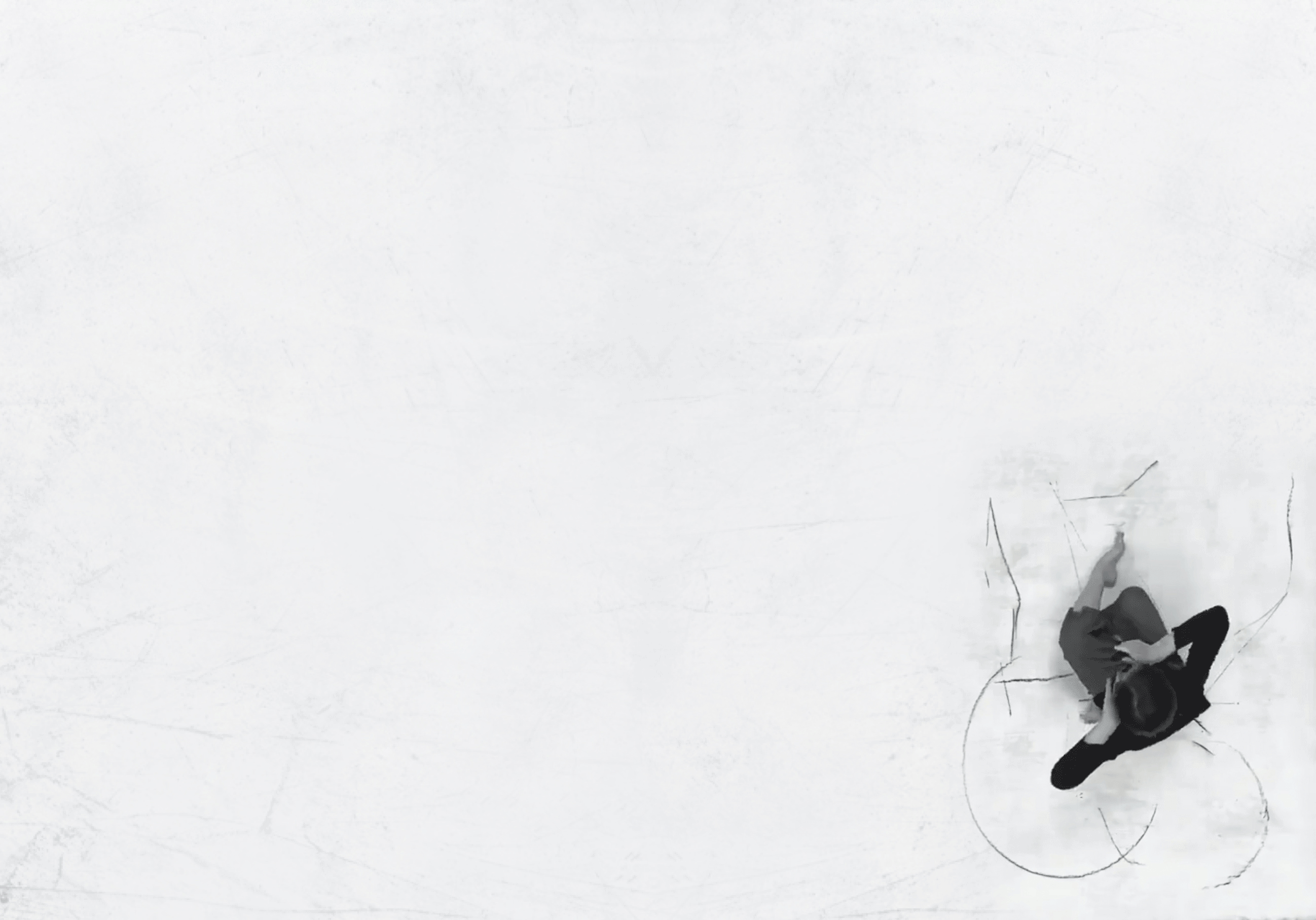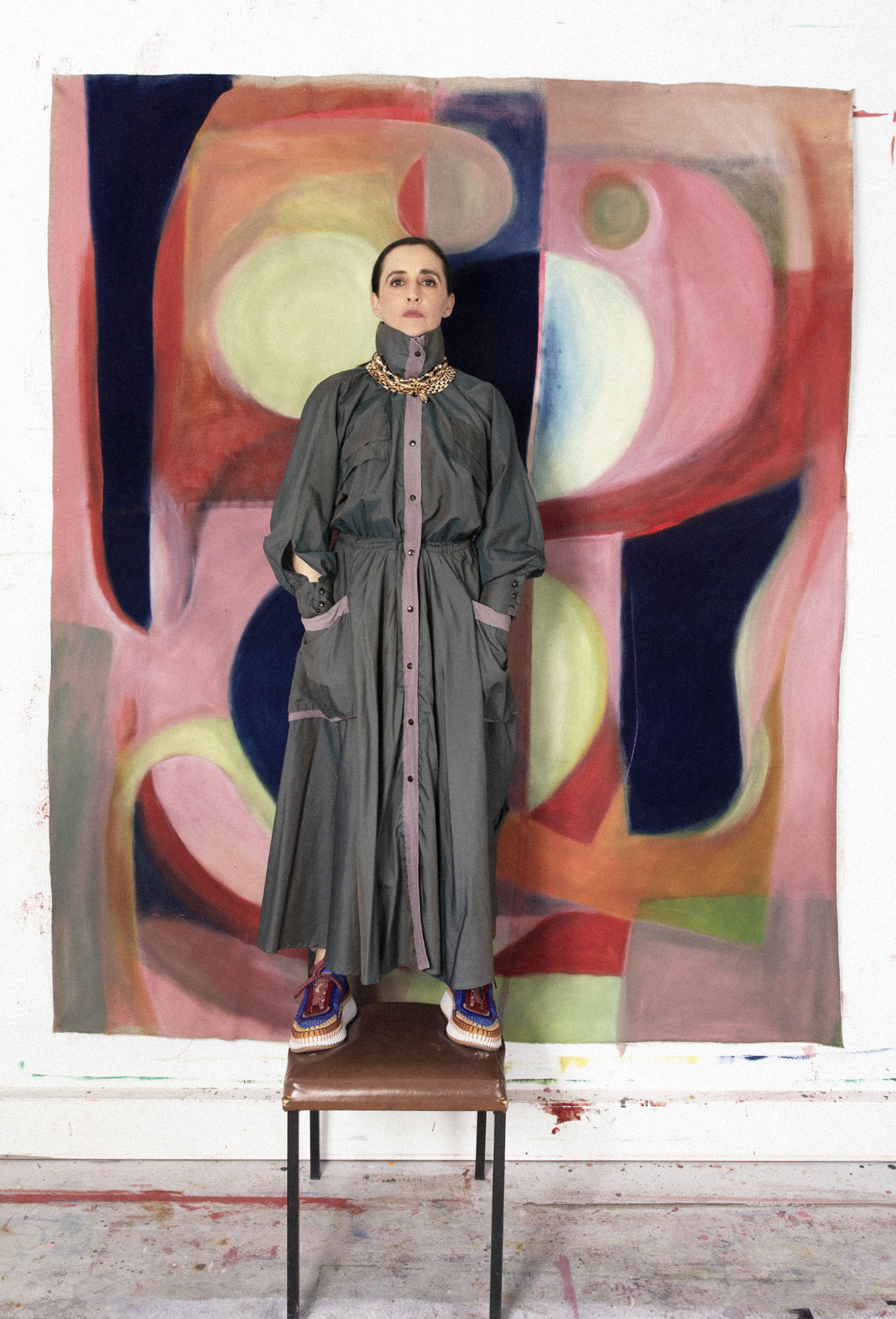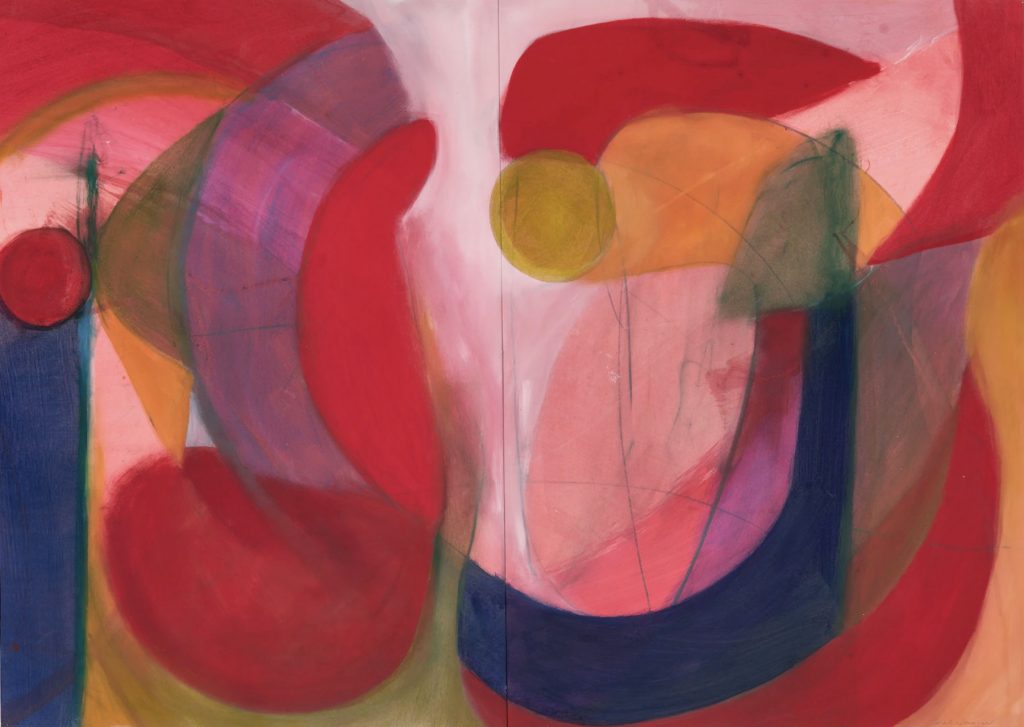Caroline Denervaud

WORDS BY ANNA FISCHER FILM & PHOTOGRAPHY CAROLINE DENERVAUD EDITOR MANU DA COSTA PHOTOGRAPHY BY PASCALINE DARGANT @PASCALINEDARGANT STARRING @CAROLINEDENERVAUD WWW.CAROLINEDENERVAUD.COM PARIS FRANCE
Movement and improvisation are essential components in Caroline Denervaud’s work, although this may not be the case forever, as choreography before painting is an option for the future according to the artist herself. In the past, an injury forced Caroline to abandon her career as a dancer and she decided to study Fine Arts, where she not only learned the art of painting, but also the art of movement, and the combination of both is the axis of her work, which reaches its fullness with the recording of the whole process on video.

As the artist herself explains through her website in the words of Beata Duvaker, “She wants to invite us to experience the role that sudden and intuitive motions led, orchestrated by the body itself in its sole being brings to shape and geometrical form. The narrative is unveiled in her videos by her own self notion and intuitional movement once she has entered the canvas floor of her studio. Wearing a chosen garment that allows an extension in movement, letting each gesture transcend into the next one, her pieces are intended to be experienced with a dimension that is visual, tactile and continuing.”
After the movement, the improvisation and the memory of both, the colours arrive, shaking the initial stroke, restructuring the forms and their interactions, creating a dialogue between stroke and intuition, between movement and art, between cinema and paper, between painting and dance, between the simple and the universal. Colour defines the intangible, the emotional, in a way that we do not understand very well, but in an irrefutable way. Although it is also true that each person defines them according to their experiences in life. Generally speaking, for example, red, one of the dominant colours in Caroline’s work, can represent energy, blue – calm, green – serenity or yellow – joy, but this, as everything in life, is relative, even what is true, the truth. This is where the role of art or the work of Denervaud comes in, the search for a true emotion or feeling on a personal level, both for the artist and the viewer.
Viewing Denervaud’s work envelops the viewer in a meditative atmosphere, allowing them to have their own physical experience without involving their own body in the work of thinking and creating. In other words, it immerses the viewer in their own physical experience through a phase of neither thinking nor creating, just observing and dreaming. Which could be a good definition of what art is.

Q. The best way to get to know an artist is to observe their work. What at do you think about that?
C. It can be true, it can be false. Maybe sometimes artists put in their work what they can’t show through their personalities. Shy artists can do very loud work.
Q. For me, your works are like a representation of the energy of movement. Do you think of them that way?
C. Yes. Like energy, emotions, instants, poetry, banality, human.
Q. What is more interesting for you, your state of mind before you start painting, the process or seeing the finished work?
C. Maybe the most exciting for me is to discover the video that has recorded the movements. If I’m surprised then it’s a good one.
Q. The process of preparing the canvas is part of the magic of each artist. What can you tell us about your preparation process?
C. I usually use linen rolls that I cut to the size I want and I prepare them with casein. It’s not my favourite part, but it takes a long time and this time is also being here and present. This time is necessary to build a link with the linen. I don’t paint on canvas, just linen on the floor.
Q. There is usually always a turning point in an artist’s life that motivates them to do what they do in their work. Do you remember any particular point in your life in terms of this?
C. Yes. One day a friend told me I was still able to dance. I had stopped dancing for many years and was now painting. That day I trusted him and started to do movements on the floor, on paper, every night, until this became part of my work.
Q. Through a dialogue between the body, dance and art, is the intention to leave a raw trace marked by that precise moment or do you follow a prepared choreography?
C. I have never choreographed the movements. However, that is something I’m thinking about as a new exploration in my practice and work.
Q. What do you spend your free time doing when you are not working?
C. Walking. Looking for clothes for the videos. Dreaming.
Q. I’ve always thought the most difficult thing is to know when a painting is finished. How do you know?
C. I don’t know. It happens! And then I decide I’m okay to stop. That’s not easy.
Q. In terms of your creative process, how do you think it has changed in recent years?
C. I´m not sure it has changed. The process is evolving. The body changes, the world around too, my work also regarding the first two.
Q. Is there any quote that you identify with?
C. “Life is not a rehearsal”. I hope this will influence me a lot more and keep my fears at bay.
